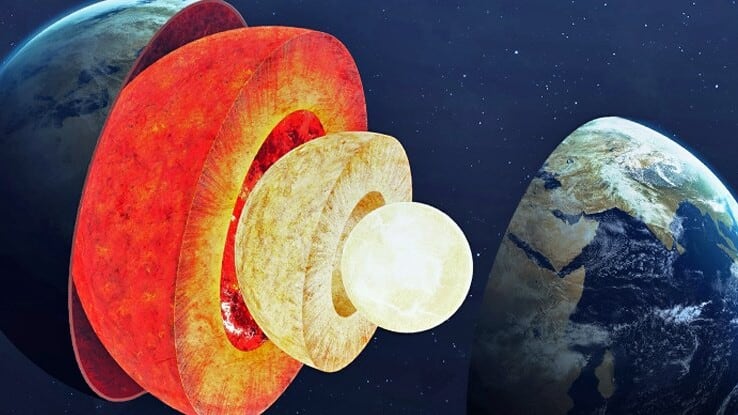
Scientists discover potential hidden structure within Earth's core
What's the story
A team of scientists led by Joanne Stephenson from the Australian National University, has made a groundbreaking discovery suggesting the existence of a hidden structure within Earth's inner core.
This means the Earth's inner core contains an even deeper core within it.
The revelation challenges the traditional geological understanding that categorizes Earth into four primary layers: the crust, mantle, outer core, and inner core.
The findings were published in the Journal of Geophysical Research: Solid Earth.
Unearthing mysteries
Seismic waves reveal Earth's innermost secrets
The team's research hinges on data collected from seismic waves and volcanic activity.
These roundabout sources have offered a peek into the makeup of Earth's fiery inner core, which hits temperatures above 5,000 degrees Celsius and makes up about 1% of Earth's total volume.
A couple of years back, Stephenson and her crew found hints that this inner core could be split into two unique layers.
Research method
A deep dive into Earth's core
To back up their theory, the scientists employed a search algorithm to comb through thousands of inner core models.
They matched these models with actual data on the travel time of seismic waves through Earth.
This data was gathered over several decades by the International Seismological Centre.
The team then analyzed models of the inner core's anisotropy - how the variations in its material composition impact seismic wave properties.
Seismic insights
Unraveling the structure of Earth's inner core
According to the team's research, some models hint that seismic waves zoom faster when they run parallel to the equator.
On the flip side, others suggest they pick up speed when they're more aligned with Earth's rotational axis.
While the study didn't spot any major depth variations in the inner core, it did find that the slower direction shifted to a 54-degree angle.
Meanwhile, the faster wave directions stayed aligned with the axis.
Geological implications
Implications of the new discovery
Stephenson said their findings "may indicate a change in the structure of iron, which suggests perhaps two separate cooling events in Earth's history."
She added that these discoveries could help resolve inconsistencies between experimental evidence and current models of Earth's structure.
The team acknowledged limitations due to the global distribution of earthquakes and receivers, particularly at polar antipodes.
However, they remain hopeful that future research will fill these data gaps and either corroborate or contradict their findings.